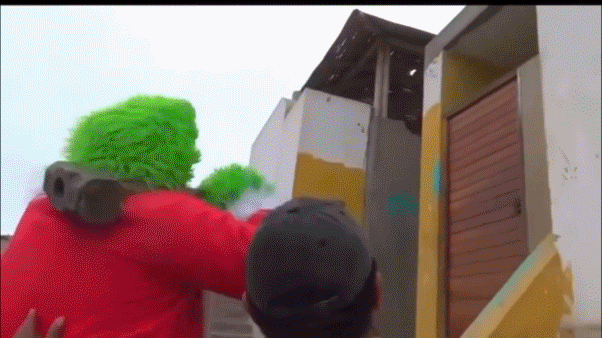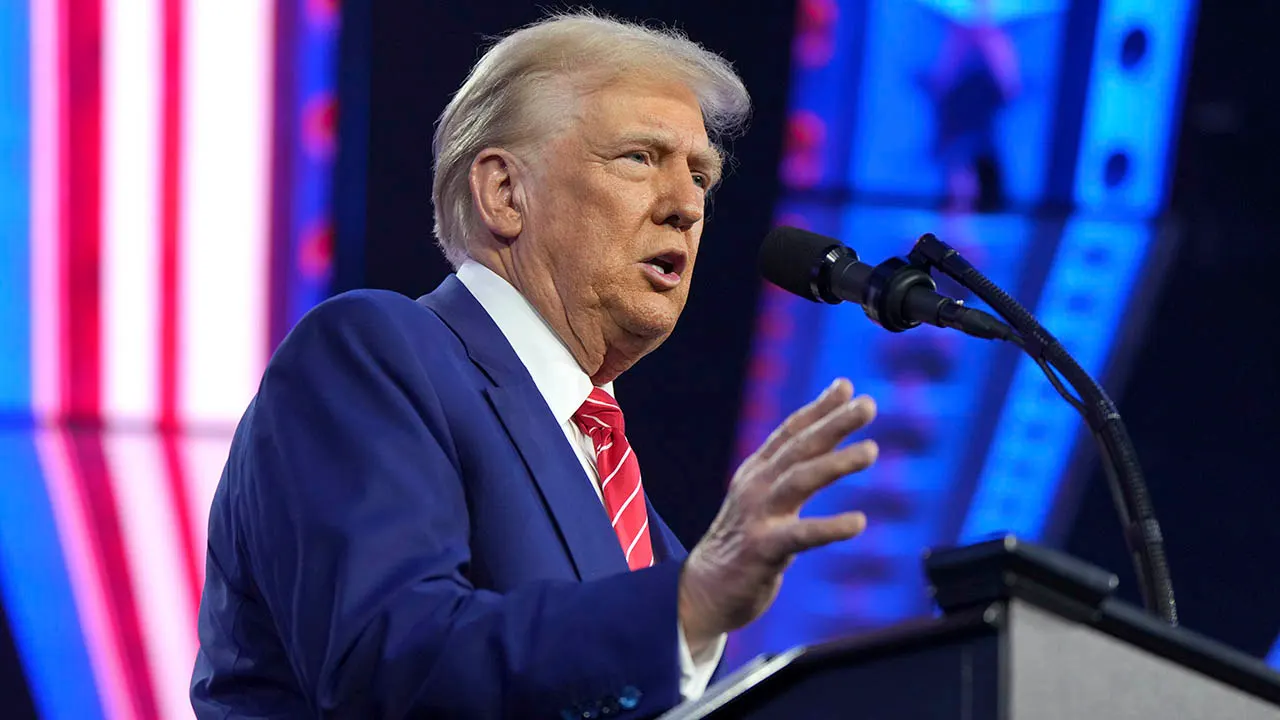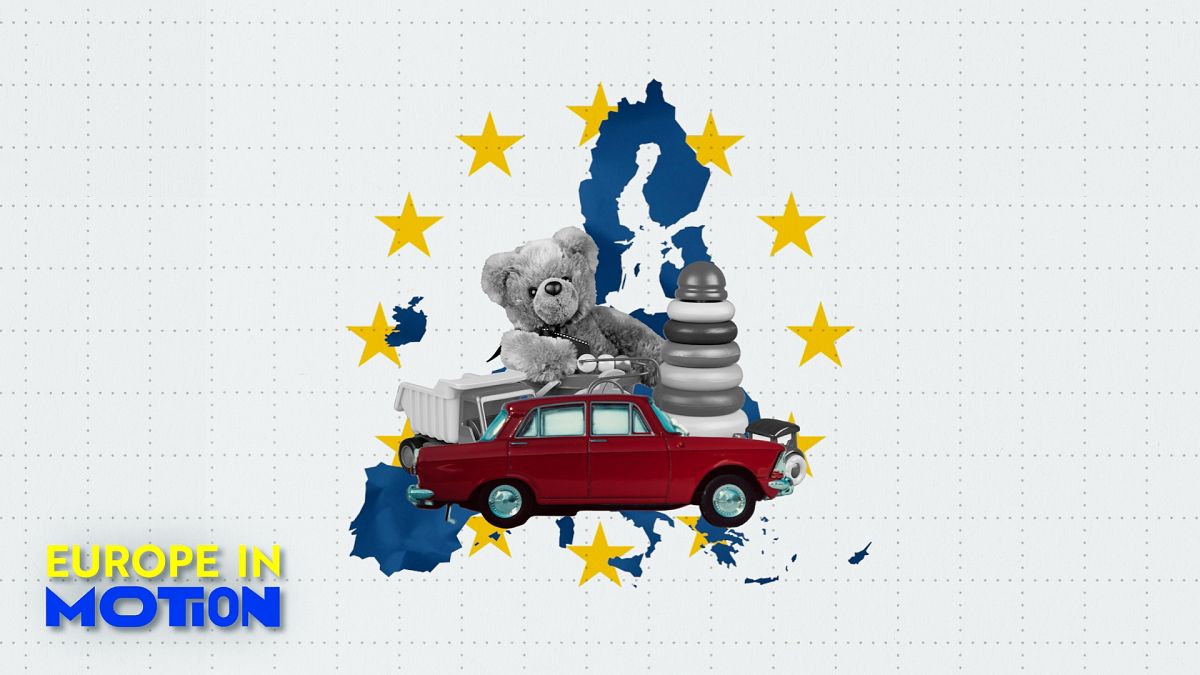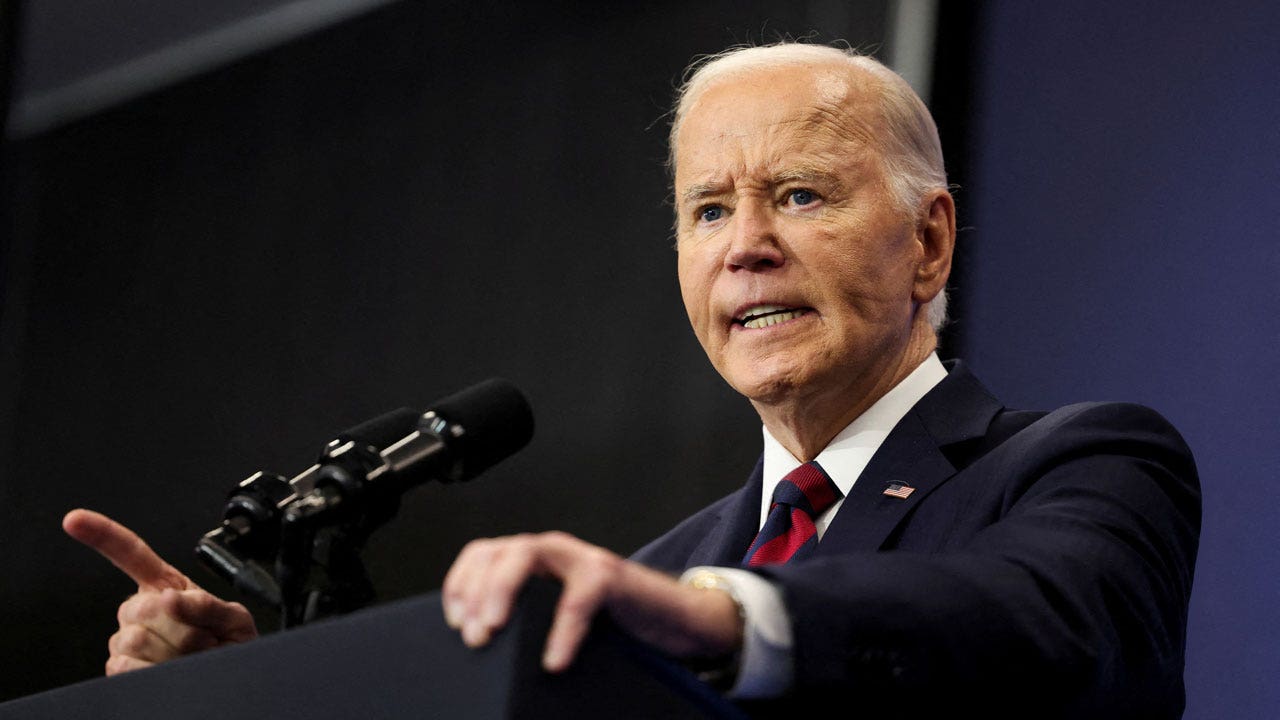Detroit, MI
How Ford, GM auto dealers are thinking about Detroit’s EV transition and their future

Ford Mustang Mach-E vehicles at a Ford dealership in Colma, California, on July 22, 2022.
Bloomberg | Getty Images
After a home, buying a car is the most expensive purchase most consumers will ever make during their lifetime. The transition to electric vehicles by major auto makers is likely to make the process a little more stressful, at least in the early days of the EV era when many consumers are still under-informed on EV basics. If consumers are to be sold on the mass adoption of battery-powered electric vehicles, car dealers are going to be essential to the pitch. It’s the network of franchise auto dealers who provide education, service, and face-to-face sales, so companies like GM and Ford are working closely with them. But it’s a daunting moment for both sides of the car business.
“We haven’t had a shift of this magnitude in the auto industry ever,” said Robb Hernandez, president of Monterey Park, Calif.-based Camino Real Chevrolet. “The ground is still moving beneath dealers making decisions. The automakers are doing their best making this shift, but the regulation is more of the driving force of how we will all have to pivot.”
That includes his home state of California, where 100% of new car sales are mandated to be EVs by 2035.
“I can only speak for GM,” Hernandez said. “They are listening as we make these changes but the landscape is ever-changing at this point,” he said. But he added, “Most auto dealers are optimistic and excited for the changing landscape.”
As of late last year, 65% of Ford’s dealers had opted into the EV certification program (a little under 2,000, according to data shared by Ford), as it has started to make the role of car dealers central to the EV transition process.
Many consumers want a streamlined process and virtually every transaction today has some online component, according to Brian Maas, president of the California New Car Dealers Association. But with the complicated nature of a vehicle purchase transaction (trade-ins, financing, purchase of extended warranties and other products), a fully online experience will only work for a percentage of car buyers. “The rest will still want to ‘kick the tires’ and take a test drive before investing $50,000+ in the average new car,” he said.
This preference is expected to hold true for EVs. A recent report from the California Air Resources Board (CARB) cites “customer choice,” “vehicle availability,” and “affordability” as keys to mass adoption, all of which require a critical role to be played by dealers.
“I think CARB understands that dealers are essential to the adoption of EVs,” Maas said.
He pointed to several factors. First, and most obvious, outside of Tesla it is franchised dealers who have to explain and sell this new technology to the mass market. Second, all the incentives adopted federally and in states such as California are administered by or through dealers. And finally, EVs won’t approach affordability in the short term without dealers making these funds available to consumers and explaining how these programs work at the point of purchase.
Kerrigan Advisors, which works with dealership groups on sales and acquisitions, noted that Ford, relative to some top global competitors, has a relatively large dealership network to manage through the EV transition. “To some, Ford’s approach is a way to weed out the smaller dealers who are unwilling to make the EV investment,” said Erin Kerrigan, founder and managing director. “Keep in mind Ford has over 3,000 franchises in the U.S.,” Kerrigan said. “By contrast, Toyota has only 1,482 and sells more vehicles than Ford.”
But she expects more Ford dealers will opt in at a future date, once they observe a meaningful consumer shift to EVs.
Timing of the EV transition is a concern
While EV sales are increasing rapidly — as recently as 2021, total battery-powered electric vehicle sales in the U.S. were under 450,000, but Kelley Blue Book says sales surpassed 800,000 in 2022 and are expected to top one million this year — dealers remain cautious about the timelines outlined by the auto companies.
“Despite significant increases in EV sales in 2023, dealers are largely skeptical about the OEM’s timeframes on the EV rollout,” Kerrigan said. “Many say they expect the rollout to take twice as long as expected and EV market share to be half as much as projected by the OEMs.”
Ford’s opt-in window will open again in 2027 for dealers that did not initially join.
Using California as a model — with its timeline being the most aggressive – the process can begin to feel pretty squeezed, Maas said.
“I like to point out that this is the most significant change in personal transportation since we went from horses to automobiles early in the 20th century. In addition to changing how vehicles are powered (from ICE to BEV), we have to provide the infrastructure for charging these vehicles and the electrical grid to support such charging, and we have to convey to consumers that their driving behavior will have to change,” he said. The CARB 2035 goal is ambitious, and California is much further along than any other state with a similar goal or considering adopting one, but “it’s still a significant leap,” Maas said.
Dealers also read the headlines and have concerns about OEMs being able to produce EVs at the pace required by mandates, with raw materials like lithium and cobalt in high demand and uncertain supply. As big a supply-demand issue is whether consumer interest will be sufficient to meet the mandate set by the state government in California for a full transition in 12 years. It is a national and state transition that ultimately becomes a local decision.
Even within California, a dealer in a rural area of the state where EV charging infrastructure is a challenge and where public investment in charging will be less likely is going to be more wary than a dealer in a major metro area in the state. A dealer in Santa Monica may decide more quickly, “I need to be all-in on EVs,” Maas said. “Where you stand depends on where your business sits,” he said. “Significant EV adoption in large cities in California seems pretty clear now, but the question is will we have significant EV adoption throughout the entire state, will Eureka have it at the same pace as LA? Maybe, maybe not?” Maas added.
Who pays for EV charging
The charging element of EVs, more than any other factor, influences how an individual’s day unfolds in a state like California where two million new cars are sold annually. Factors include car owners who live in multi-family housing; and the time it can take to charge — as much as 30 minutes to several hours vs. less than five minutes today to fill a gas tank at the many fueling stations with prices prominently posted and adjusted frequently.
“These challenges aren’t insurmountable, but we do have to explain them to consumers, honestly, so that future car buyers are prepared for what lies ahead,” Maas said.
To become “EV certified,” Ford dealerships can buy into a $500,000 tier or a $1.2 million tier, with the vast majority of that investment tied to the expense of installing EV charging infrastructure. At the lower end, this certification provides dealers with repair and maintenance capabilities and a public DC fast charger, but no EVs to show in the showroom, and no access to a Ford.com presence. It also caps their total EV sales at 25% of inventory. The “elite” tier provides two public DC fast chargers, demo units, rapid replenishment, and a presence on Ford.com.
Ford CEO Jim Farley told Automotive News last December when it announced that two-thirds of dealers had signed on for the EV program (most for the higher-priced tier), “The future of the franchise system hangs in the balance here,” Farley said. “The No. 1 EV player in the U.S. bet against the dealers. We wanted to make the opposite choice.”
But specific concerns from dealers, expressed to Ford, offer a window into the desire on the part of the dealers to also ask for deepening commitment from Ford as part of their own commitment to the e-certification program. One issue has been dealer reluctance to offer public charging at their locations and asking Ford to up its own investment in public charging, even though dealers are aware the OEMs are spending billions on factories for new EVs and batteries.
Dealers are prepared to offer charging for new vehicles to be sold on their lot and vehicles being serviced. But OEMs asking dealerships to serve as public charging stations has led to pushback. “Tesla pays for its supercharging network, yes with lots of taxpayer subsidies, but they pay,” Maas said. “Dealers are in the business of selling and servicing cars, not selling electrons,” he said. While future business cases may prove that dealers can make money from charging, Maas noted that the selling of electrons is heavily regulated by public utility commissions across the country. “Maybe dealers just want to sell and service cars,” he said. “I haven’t been to a dealership that sells gasoline.”
Notably, Ford announced a deal with Tesla last week to use its charging network, which surprised some EV experts given the competitive nature of the market, but also placed more pressure on GM to increase charging options.

Charging is a big issue, but not the only issue for dealers.
“While 24/7 public charging has perhaps garnered the most attention, there are numerous program features that we have asked Ford to modify or eliminate,” Maas said.
Dozens of state dealer trade associations have challenged Ford on multiple aspects of its EV certification program, including its basic legality relative to state law about franchise models.
Auto makers reliant on the franchise model have a financial incentive to control more of the margin that will be available in the EV market, and have learned from watching the margin profile and quality control enjoyed by Tesla’s direct-to-consumer model.
“We have to change our cost profile,” Ford CEO Jim Farley told CNBC in February.
Ford’s approach to selling EVs in some ways is trying to mimic Tesla’s which gives the company more control over standards from store to store than can be achieved through Ford’s traditional franchise model.
There is always tension between franchisors and franchisees, and all states have franchise laws to try and balance the relationship, and where individual dealers and dealer associations are pushing back is where they feel OEMs are using the EV transition as a way to make asks they never would have made previously. That is not limited to charging, but OEM programs dictating how consumers can reserve EVs, and prescribing how EVs have to be sold, dealer trade-in programs, and service contracts.
“Dealers generally chafe at manufacturer requirements that intrude on their ability to sell to their customers,” Maas said. “OEMs make cars and the dealer buys them at wholesale and the dealer sells. Why should that change because it’s powered by electricity? There’s nothing magic about the fact that it is powered by electricity,” he said.
Auto dealership sales market remains hot
Kerrigan said most of the dealers with whom she speaks do expect GM to eventually have a similar program to Ford’s. Meanwhile, GM is reducing its dealer headcount by buying out existing dealers. In the case of Buick, GM is offering a franchise buyback for those dealers who do not want to make the EV investment. Cadillac has also “quietly reduced” its dealer count through buyouts, Kerrigan said. As opposed to Ford’s “pay-to-play” strategy, she described GM’s current approach as more carrot than stick and, in reducing franchise count, ensuring the GM network is well-positioned to sell and service EVs.
Dealers, though, may see two sides to the ways both big OEMs are playing the EV transition. Ford, by giving dealers the option to opt in later, will be seen by some dealers who are more reluctant today as being more flexible, if requiring more of an upfront investment today. Some dealers may see the GM approach as the more rigid one, based on their situation. “If you sold your store, there is no changing your mind,” Maas said. The OEMs are in a difficult position attempting to meet all dealer needs and concerns about EVs. “It’s hard to have a national program that is one size fits all for the new vehicle market,” he said.
In the short-term, the EV concerns are not proving to be a big factor in overall willingness among entrepreneurs to invest in car dealerships. Amid a big jump in new and used car prices — the average new car retail price increased from $33,000 to over $46,000 between 2015 and 2023 — transactions in the auto dealer market were the second-highest ever in 2022, according to Kerrigan, with a record 845 franchises sold during the first three quarters of the year. While publicly traded auto retailers retreated from the market as their stock market valuations were cut, private buyers increased their presence as earnings soared for the third-consecutive year. Average dealership earnings rose 9% in 2022, which was 210% above the pre-pandemic five-year average.
“Even in a rising interest rate environment, dealers voted with their pocketbooks and grew their businesses through acquisition in 2022 and continue to do so in 2023,” Kerrigan noted in its April report on sales activity.
Car dealership owners have proven to be an adaptive group of small business owners throughout history.
“Dealers are very resilient business people,” Kerrigan said. “The demise of the auto retail business model has been erroneously predicted countless times.”
She said most are not overly concerned about the shift to EVs. While some worry about a decline in fixed operations revenue from sales and service as ICE cars disappear, others see the potential for higher revenue in the service and parts department as dealers retain a higher percentage of the customer service spend with EVs. Maas said while there has been a lot of talk about a service business cliff related to EVs, it’s just talk. “Service is not going away,” he said. In 2022, service contributed 12% of dealership revenue, according to the National Auto Dealers Association, versus nearly 50% for new car sales and 38% for used vehicles.
Dealers are gaining a larger share of EV sales, totaling almost 260,000 units in 2022, according to NADA, and dealers capturing 35% of the new EV market by the end of the year. “We expect this to continue as more BEV models are released by the legacy OEMs in the coming years,” NADA said in its annual report.
“The smartest dealers are trying to figure out where this is going and make decisions both for their family and investment in the business,” Maas said. “Ultimately, it will be up to consumers to tell the dealers and OEMs and the larger market what’s going to happen, because if consumers buy these vehicles in huge numbers it’s a signal to the market we need to respond. But if they don’t buy at the pace CARB has set, then some adjustments have to be made.”

Detroit, MI
Auto shop hosting free oil change giveaway in Detroit on Christmas for those in need

DETROIT (WXYZ) — FastLane Oil Change in Detroit is giving back this holiday.
The shop on W. 8 Mile Road near the Soutfield Freeway is gifting 25 free oil changes and wiper blades for people in need Wednesday on Christmas Day.
And it doesn’t end there. Customers in line behind the first 15 cars will get half off a regularly priced oil change.
To add to the holiday giving, the business is helping a mother of nine get her car back on the road with new brakes, rotors, pads and filters for free. It’s something that she says significantly help her this holiday.
“A stress that was lifted off of my shoulders because this was something that was gonna need to be done sooner than later, but I was putting it off because it wasn’t in the budget, especially right now,” Rashanda Martin said.
In addition, the Blazin’ Grill right next door to the car shop is giving away 100 free meals on Wednesday. The free and half-off promotions will run from 1 p.m. until 5 p.m. The offers are good for Christmas Day only for families and individuals in need.
Detroit, MI
How a Detroit Lions fan’s life was saved and then lost — and the real message behind it

Jeremy Schmidt was given a gift on Sunday: four or five extra hours with his father, Wally Schmidt — a big-hearted man who loved to fish and work on cars and go to car shows and was “my rock, my last pillar.”
Wally, 65, collapsed on the field in Soldier Field on Sunday morning before the Detroit Lions played the Chicago Bears.
“I saw his eyes roll back,” Jeremy said, “and immediately, I’m yelling for help.”
Ben Roth, an off-duty paramedic from Texas, rushed to help, assessing the symptoms.
“That man gave me four or five more hours with my dad, which is invaluable,” Jeremy said. “That guy was amazing for what he did with no hesitation.”
As state troopers came to help and Bears personnel got an AED (automated external defibrillator) machine, CPR was started and Roth pushed the AED button, giving Wally a shock and bringing him back to life.
“His heart stopped on the field,” Jeremy said. “It took one zap to bring him back.”
Wally, who is from Midlothian, Illinois, was taken to Northwestern Memorial Hospital in Chicago.
“In the ambulance, he was responsive, and I could hear the paramedics talking with him,” said Jeremy, who sat up front.
Wally was answering questions in the emergency room.
“I would say his energy was a little drained, but he was still himself, and he was still very coherent, very responsive to what happened, knew where what was going on,” Jeremy said.
Wally even started cracking jokes.
“He was joking about the fact that he was rooting for the Lions over the Bears,” Jeremy said.
Yes, Wally was a Bears fan, who got so frustrated with the losing, so frustrated with this franchise, that he joined the Lions bandwagon.
“It’s hard to watch the Bears if you’re a Bears fan,” Jeremy said. “And I’m a Lions fan, so maybe I had some influence on that. I feel like a lot of Bears fans sympathize with Lions fans. If it’s not going to be them, they root for the Lions, because they all hate the Packers.”
Getting extra time
Jeremy called his stepmother, Beth Schmidt: “She was able to get to the hospital to spend those last hours with him in the room,” Jeremy said.
Jeremy said that his father seemed stable in the ER.
“Everything was okay for the time being,” Jeremy said. “He got his CAT scan, and when he came back from that, he was starting to feel weak, and he was nauseous throughout the whole thing.”
More tests were ordered.
“They were trying to figure out, is there some sort of blockage?” Jeremy said. “Do we need to do a stent? Or, you know, is this serious to the point where we’re going to have to do open heart surgery?”
While in the ER, Wally took a turn.
“He was starting to feel weaker and not feel great,” Jeremy said. “And that’s when things started to go south. You can see the monitor, and it starts beeping a little crazy and turns red — you know, it’s not okay. And then I could see it in his face, his eyes went back, and he kind of tilted his head.”
Doctors and nurses rushed into his room: “The amount of care he got was insane. I would say upwards of 30-plus people were in the emergency room, in his room, working to get him stable at that point, which they were able to do through a breathing tube. They probably zapped him another eight to 10 times down there in the emergency room.”
He was taken for another procedure, but he died during it.
“They notified us that he unfortunately did not make it through the procedure,” Jeremy said. “And they informed us that the left side of his heart had pretty much 100% blockage, which is the side they call a widow-maker. The right side was close to 100%, so no matter how much CPR or anything they did, they just were not able to save him.”
He paused.
“I went from watching the Bears on the field at 11 o’clock with my dad to him passing at 5:30 that day,” Jeremy said. “His heart was in that bad of shape, like it was an incident waiting to happen.”
Two Lions fans linked together
On Monday, Jeremy was still in shock, still trying to process everything. He had to help set up a funeral and make arraingments.
But he did something else.
He called Roth to thank him for what he did on that field.
“I just wanted to express my gratitude,” he said.
Here were two Lions fans, who were brought together in the strangest of ways.
Neither had ever been on an NFL field before. Roth was invited by somebody in the stands who had two extra tickets, and Jeremy had a friend with some extra field passes.
And now, they were united in a dramatic, painful moment.
“I just wanted to comfort him,” Roth said.
And Roth can sense a higher power at work.
“We were supposed to meet,” Roth said. “It’s truly above me. It’s a spiritual thing. It’s a religious thing. It’s whatever deity you want to say, or whatever way you want to say, that things happen.”
Roth, who was incredibly disappointed and dejected, plans to stay in the Chicago area and go to the funeral.
“For closure,” he said.
You can view this story two ways.
You can view it as a tragic ending; certainly, it was, and I feel horrible for the family.
But you can also view it another way: It’s a miracle this family got those extra four or five hours.
The real lesson of this story
Jeremy remembers one last heartfelt moment with his father.
On the way to the game, Jeremy was just so dang happy his father went.
“When I invited him to the game, I didn’t think he was going to go,” Jeremy said. “He’s not big on cold-weather games.”
In the car, Jeremy shared something with his father.
“I told him, ‘I’m very happy you are here, because I don’t know when I’ll be able to do this with you again,’” Jeremy remembers saying, thinking about how he got the tickets. “He was ecstatic. He couldn’t have been happier to be going to that game that day.”
Jeremy paused.
“It’s the little things that you say,” he said, “and you don’t realize how they have that much meaning.”
That is the part that I can’t stop thinking about.
Both of my parents have died in the past few years, and I find myself thinking about them at strange times. When one of my kids has some big news, I think: I should call my parents to tell them. Then, it stuns me to realize they are gone.
I used to call my parents during long drives to watch my son play college football. And now, when I’m on a long drive, like I made to Chicago on Saturday, I had a strong, overwhelming desire to call my parents while driving.
Like I used to do.
And it’s a shock to realize, once again, they are gone.
I find myself thinking: I just wish I had a few more minutes.
Just a sliver of time to talk to them one last time.
That’s the big lesson here — the thing we can ask ourselves: What would you do if you were given a few extra minutes? Or a few more hours?
Would you make amends? Would you ask somebody for forgiveness? Is there something you haven’t said? Would you express your love? Would you cherish every moment?
That’s the lesson here: If there is something you would do, don’t wait.
As we finish out this holiday season, as we approach a new year, I’m gonna try to use this time more carefully.
My youngest son is in town for the holidays — I have to cherish this time with him.
I have a group of friends coming for New Year’s — we have been getting together on New Year’s Eve since college. But I don’t want to take this year for granted.
My granddaughter — who happens to be the cutest dang thing in the world — is simply growing up too fast, and I’m trying like crazy to be present every single second.
If I have one wish for this holiday season — one promise, one vow — it’s to slow down and appreciate more.
To use every stinking minute.
Because you never know when you have only a few hours.
Or even four or five extra ones.
Contact Jeff Seidel: jseidel@freepress.com. Follow him on X @seideljeff. To read his recent columns, go to freep.com/sports/jeff-seidel.
Detroit, MI
LeBron James Official Playing Status for Detroit Pistons vs Lakers

Heading into their Monday night matchup against the Los Angeles Lakers, the Detroit Pistons anticipated potentially playing against a LaBron James-less LA team
On the injury report, the Lakers downgraded LeBron to questionable. The veteran forward has been managing a left foot injury.
That won’t stop him from playing on Monday. The Lakers have upgraded LeBron to available for the matchup against the Pistons.
LeBron James (injury management) available to play Monday.
— Underdog NBA (@Underdog__NBA) December 24, 2024
Prior to LA’s current three-game stretch leading up to Monday’s game, LeBron missed two games for the first time this season. In matchups against the Portland Trail Blazers and the Minnesota Timberwolves, the Lakers went 1-1 without their star forward.
When James returned to action on December 15 to take on the Memphis Grizzlies, LeBron checked in for 34 minutes. He scored 18 points, eight assists, and eight rebounds to help lead the Lakers past the Grizzlies.
In the next two games, LeBron appeared on the court for 34 minutes each time. He averaged 25 points, seven rebounds, and seven assists while hitting on 47 percent of his shots from the field.
When the Pistons and the Lakers met for the first and only time this season back in early November, LeBron checked in for 40 minutes. He produced 20 points, eight rebounds, and 11 assists. Although LeBron was on the floor, his presence didn’t help propel the Lakers past the Pistons as Detroit defeated LA by 12 points.
As far as the rest of the Lakers’ injury report goes, LA ruled out Christian Wood, Jarred Vanderbilt, Jalen Hood-Schifino, and Jaxson Hayes. Anthony Davis was also questionable, but has been upgraded to available.
On Monday, the Pistons will search for their 13th victory of the year.
-

 Business1 week ago
Business1 week agoFreddie Freeman's World Series walk-off grand slam baseball sells at auction for $1.56 million
-
/cdn.vox-cdn.com/uploads/chorus_asset/file/23951353/STK043_VRG_Illo_N_Barclay_3_Meta.jpg)
/cdn.vox-cdn.com/uploads/chorus_asset/file/23951353/STK043_VRG_Illo_N_Barclay_3_Meta.jpg) Technology1 week ago
Technology1 week agoMeta’s Instagram boss: who posted something matters more in the AI age
-
/cdn.vox-cdn.com/uploads/chorus_asset/file/24924653/236780_Google_AntiTrust_Trial_Custom_Art_CVirginia__0003_1.png)
/cdn.vox-cdn.com/uploads/chorus_asset/file/24924653/236780_Google_AntiTrust_Trial_Custom_Art_CVirginia__0003_1.png) Technology4 days ago
Technology4 days agoGoogle’s counteroffer to the government trying to break it up is unbundling Android apps
-
News1 week ago
East’s wintry mix could make travel dicey. And yes, that was a tornado in Calif.
-

 Politics5 days ago
Politics5 days agoIllegal immigrant sexually abused child in the U.S. after being removed from the country five times
-

 News5 days ago
News5 days agoNovo Nordisk shares tumble as weight-loss drug trial data disappoints
-

 Entertainment5 days ago
Entertainment5 days ago'It's a little holiday gift': Inside the Weeknd's free Santa Monica show for his biggest fans
-
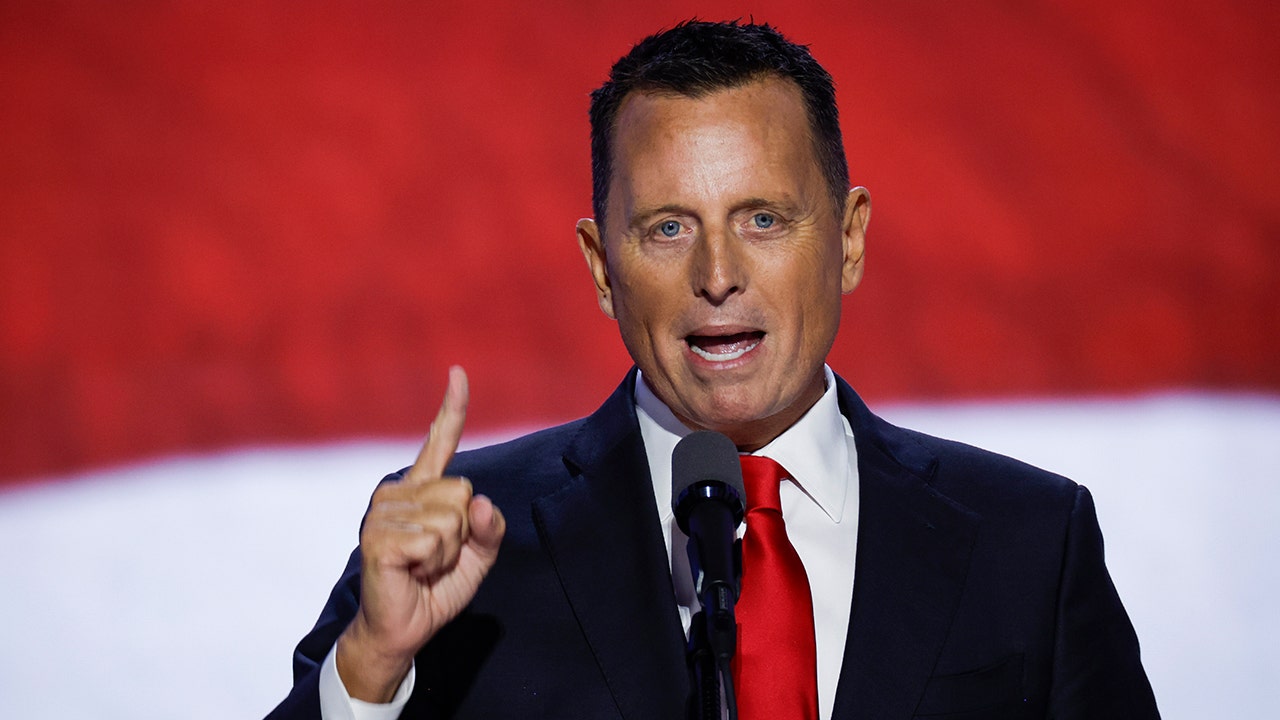
 Politics1 week ago
Politics1 week agoTrump taps Richard Grenell as presidential envoy for special missions, Edward S. Walsh as Ireland ambassador







/cdn.vox-cdn.com/uploads/chorus_asset/file/25672934/Metaphor_Key_Art_Horizontal.png)
